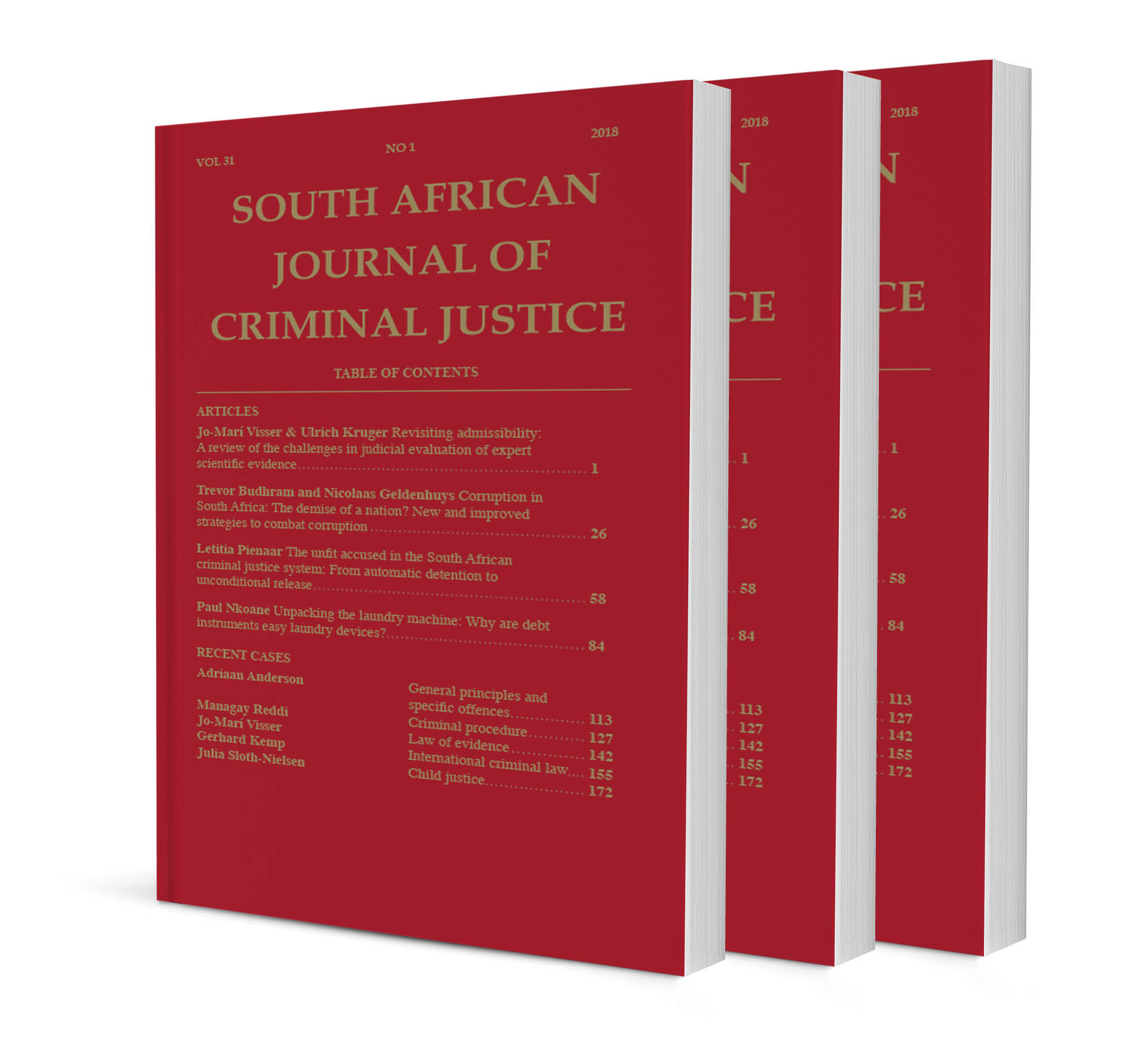‘Protracted armed conflict’: A conundrum. Does article 8(2)( f ) of the Rome Statute require an organised armed group to meet the organisational criteria of Additional Protocol II?

‘Protracted armed conflict’: A conundrum. Does article 8(2)( f ) of the Rome Statute require an organised armed group to meet the organisational criteria of Additional Protocol II?
Author Martha M Bradley
ISSN: 1996-2118
Affiliations: LLB LLM LLD (Pretoria) LLM (Cape Town), Lecturer, Department of Public Law, University of Pretoria.
Source: South African Journal of Criminal Justice, Volume 32 Issue 3, p. 291 – 323
Abstract
This contribution sets out to determine whether the degree of organisation that a non-state fighting unit has to meet to be classified as an organised armed group under art 8(2)( f) of the Rome Statute is similar to the requirements set out in art 1(1) of Additional Protocol II. The construct ‘protracted armed conflict’ was for the first time introduced in art 8(2)( f ) of the Rome Statute. Article 8(2)( f ) of the Rome Statute delineates the type of conflict in which the war crimes listed under art 8(2)(e) of the Rome Statute may be committed. The meaning attached to ‘protracted armed conflict’ as introduced by art 8(2)( f ) of the Rome Statute is obscure in that its application differs from the traditional definition of non-international armed conflict. However, in defining the nature of the conflict under art 8(2)( f ), the term ‘organised armed group’, first codified in art 1(1) of Additional Protocol II, is used. Furthermore, the war crimes listed in art 8(2)(e) are founded on the description of violations of the rules of international humanitarian law in Additional Protocol II. In these circumstances, it is possible under art 8(2)( f ) that an organised armed group must meet the organisational criteria required by art 1(1) of Additional Protocol II. On the other hand, the construct ‘protracted armed conflict’ may create an entirely new category of organised armed groups unique to art 8(2)( f ) of the Rome Statute. The most straightforward explanation is that the organisational criteria under art 8(2)( f ) simply are similar to the requirements under art 8(2)(d) of the Rome Statute.
As reflected in the Ntaganda Decision of Trial Chamber VI of the International Criminal Court on 8 July 2019, conflict classification is crucial to war crime adjudication as a nexus is required between war crimes and the arena in which they are committed. An initial step the International Criminal Court undertakes in prosecuting war crimes is to determine whether or not an armed conflict existed at the time the alleged crime was committed and to classify that conflict. As confirmed by the 2018 War Report, the majority of armed conflicts are non-international in nature, and violations of international humanitarian law constituting war crimes in all probability are most likely to occur in this context. As recorded, the majority of investigations into war crimes as well as current cases relating to the alleged commission of war crimes adjudicated by the ICC occurred in the context of non-international armed conflict. Many of the crimes being investigated or tried are included in the listing in art 8(2)(e) and, therefore, transpire in art 8(2)( f )-type armed conflicts. It is important to gain certainty as to the organisational threshold requirement to be satisfied in establishing whether there is a ‘protracted armed conflict’ under art 8(2)( f) of the Rome Statute. The author offers preliminary conclusions in relation to the conundrum by interrogating the traditional sources of international law.